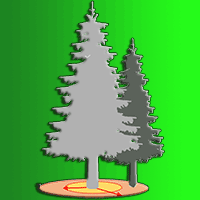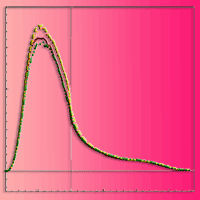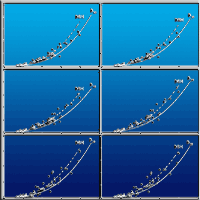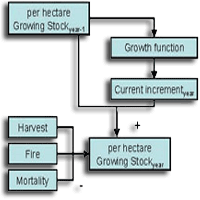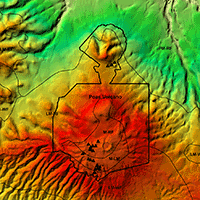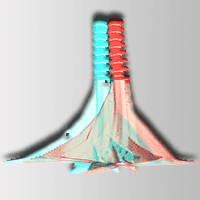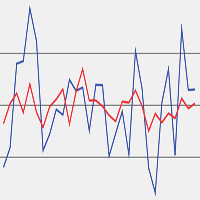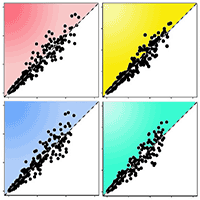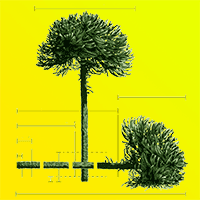
Aboveground tree biomass of Araucaria araucana in southern Chile: measurements and multi-objective optimization of biomass models
Erico Kutchartt (1) , Jorge Gayoso (2), Francesco Pirotti (1), Álvaro Bucarey (2), Javier Guerra (3), Jaime Hernández (4), Patricio Corvalán (4), Karel Drápela (5), Mark Olson (6), Martin Zwanzig (7)
iForest - Biogeosciences and Forestry, Volume 14, Issue 1, Pages 61-70 (2021)
doi: https://doi.org/10.3832/ifor3492-013
Published: Feb 09, 2021 - Copyright © 2021 SISEF
Research Articles
Abstract
Estimating carbon stocks in wooded systems is crucial to quantify national greenhouse gas balance estimates. However, inaccurate estimates are likely due to the divergent architecture of many species. The monkey puzzle tree Araucaria araucana, with its umbrella-like architecture is a vivid example. This species, often found in monodominant stands at high elevations, is the greatest carbon reservoir in the landscape, hence estimating its carbon storage is crucial. To provide the necessary basis for these estimations, we documented the variation in basic density and moisture content along the stem profile, identified the most suitable biomass estimation models, and quantified biomass allocation for three age ranges. We measured, felled, weighed, and separated trees into three categories: stem wood, stem bark, and foliage (branches + scaly leaves). The log-linear form of the simple allometric equation Y = aXb, based on diameter at breast height as the explanatory variable, covered a large part of the variation and showed good cross-validation performance (>0.96). Models using more covariates achieved lower absolute errors, but the estimation of the additional model parameters was associated with greater uncertainty. A multi-objective model comparison revealed that the best additional covariate to further improve biomass estimation was total tree height. The mean absolute percentage error was 9.8% for the total aboveground biomass, 8% for stem wood, 12% for stem bark and 24% for foliage. Changes in biomass distribution among tree components were related to age. For older trees, there was a relative increase in stem wood, a decreased proportion of foliage, but no change in stem bark. The proportion of stem bark biomass is similar to that of Araucaria angustifolia, but higher than in other conifers and most trees in general. Our results provide key properties for A. araucana and general guidance for the selection of easily-measurable variables allowing for excellent predictive power for local biomass estimation.
Keywords
Monkey Puzzle Tree, Carbon Stocks, Forest Modelling, Multicriteria Optimization, Allometry
Authors’ Info
Authors’ address
Francesco Pirotti 0000-0002-4796-6406
Department of Land, Environment, Agriculture and Forestry (TESAF), University of Padova, v. dell’Università 16, I-35020 Legnaro, PD (Italy)
Álvaro Bucarey
Instituto de Bosques y Sociedad (IBOS), Universidad Austral de Chile, Campus Isla Teja, Valdivia (Chile)
Campo Digital GIS and Remote Sensing, Sarmiento 1767, Osorno (Chile)
Patricio Corvalán 0000-0002-9642-0629
Departamento de Gestión Forestal y su Medio Ambiente, Universidad de Chile, Santa Rosa, 11315 La Pintana, Santiago (Chile)
Department of Forest Management and Applied Geoinformatics (FFWT), Mendel University in Brno, Zemedelská 3, 61300 Brno (Czech Republic)
Instituto de Biología, Universidad Nacional Autónoma de México, Tercer Circuito s/n de Ciudad Universitaria, Ciudad de México 04510 (México)
Department of Forest Sciences, Institute of Forest Growth and Forest Computer Sciences, Technische Universität Dresden, Pienner Str. 8, D-01737 Tharandt (Germany)
Corresponding author
Paper Info
Citation
Kutchartt E, Gayoso J, Pirotti F, Bucarey Á, Guerra J, Hernández J, Corvalán P, Drápela K, Olson M, Zwanzig M (2021). Aboveground tree biomass of Araucaria araucana in southern Chile: measurements and multi-objective optimization of biomass models. iForest 14: 61-70. - doi: 10.3832/ifor3492-013
Academic Editor
Alessio Collalti
Paper history
Received: May 05, 2020
Accepted: Dec 10, 2020
First online: Feb 09, 2021
Publication Date: Feb 28, 2021
Publication Time: 2.03 months
Copyright Information
© SISEF - The Italian Society of Silviculture and Forest Ecology 2021
Open Access
This article is distributed under the terms of the Creative Commons Attribution-Non Commercial 4.0 International (https://creativecommons.org/licenses/by-nc/4.0/), which permits unrestricted use, distribution, and reproduction in any medium, provided you give appropriate credit to the original author(s) and the source, provide a link to the Creative Commons license, and indicate if changes were made.
Web Metrics
Breakdown by View Type
Article Usage
Total Article Views: 38590
(from publication date up to now)
Breakdown by View Type
HTML Page Views: 31335
Abstract Page Views: 3486
PDF Downloads: 3101
Citation/Reference Downloads: 6
XML Downloads: 662
Web Metrics
Days since publication: 1770
Overall contacts: 38590
Avg. contacts per week: 152.62
Citation Metrics
Article Citations
Article citations are based on data periodically collected from the Clarivate Web of Science web site
(last update: Mar 2025)
Total number of cites (since 2021): 6
Average cites per year: 1.20
Publication Metrics
by Dimensions ©
Articles citing this article
List of the papers citing this article based on CrossRef Cited-by.
References
Atlas agroclimático de Chile. Estado actual y tendencias del clima. Tomo IV: Regiones del Biobío y de La Araucanía [Agroclimatic atlas of Chile. Current status and climate trends. Volume VI: Regions of Biobio and Araucania]. Universidad de Chile y Centro de Agricultura y Medioambiente. Santiago, Chile, pp. 136. [in Spanish]
Gscholar
Las especies arbóreas de los bosques templados de Chile y Argentina: autoecología [Tree species from the temperate forests of Chile and Argentina: autoecology]. Marisa Cuneo Ediciones, Valdivia, Chile, pp. 678. [in Spanish]
Gscholar
Producción, permanencia y germinación de semillas de Araucaria araucana (Mol.) K. Koch en bosques naturales, aprovechados por comunidades indígenas del sur de Chile [Production, permanence and germination of seeds of Araucaria araucana (Mol.) K. Koch in natural forests, used by indigenous communities in southern Chile]. Interciencia 39 (5): 338-343. [in Spanish]
Online | Gscholar
Contenido de carbono y funciones de biomasa en especies nativas y exóticas. Medición de la capacidad de captura de carbono en bosques de Chile y promoción en el mercado mundial [Carbon content and biomass functions in native and exotic species. Measurement of carbon sequestration capacity in Chilean forests and promotion in the world market]. Technical report FONDEF D98I1076, Instituto Forestal y Universidad Austral de Chile, Valdivia, Chile, pp. 53. [in Spanish]
Gscholar
Funciones alométricas para la determinación de existencias de carbono forestal para la especie Araucaria araucana (Molina) K. Koch (ARAUCARIA) [Allometric functions for the determination of forest carbon stocks for the species Araucaria araucana (Molina) K. Koch (ARAUCARIA)]. Ministerio de Agricultura, Corporación Nacional Forestal. Santiago, Chile, pp. 49. [in Spanish]
Gscholar
Variación de las propiedades físicas de la madera en un árbol de Abies religiosa y de Pinus ayacahuite var. veitchii [Variation in physical properties of Abies religiosa and Pinus ayacahuite var. veitchii wood]. Revista Chapingo - Serie Ciencias Forestales y del Ambiente 6 (1): 83-92. [in Spanish]
Online | Gscholar
The elements of statistical learning: data mining, inference and prediction (2nd edn). Springer, New York, USA, pp. 763.
Gscholar
Physical and mechanical properties of wood - Test methods for small clear wood specimens - Part 1: Determination of moisture content for physical and mechanical tests. International Organization for Standardization, Geneva, Switzerland, pp. 4.
Gscholar
Physical and mechanical properties of wood - Test methods for small clear wood specimens - Part 2: Determination of density for physical and mechanical tests. International Organization for Standardization, Geneva, Switzerland, pp. 5.
Gscholar
Relações individuais de biomassa e conteúdo de carbono em plantações de Araucaria angustifolia e Pinus taeda no sul do estado do Paraná, Brasil [Individual biomass and carbon content in Araucaria angustifolia and Pinus taeda plantations in southern Parana state, Brazil]. Revista Acadêmica: Ciências Agrárias e Ambientais 1 (3): 33-40. [in Portuguese]
CrossRef | Gscholar
Produção de biomassa no corte raso em plantio de Araucaria angustifolia (Bertol.) Kuntze de 27 anos de idade em quedas do Iguaçu, PR [Biomass production after clear cutting in a 27-year-old stand of Araucaria angustifolia (Bertol.) Kuntze at Iguaçu waterfalls, PR]. Ciência Florestal 21 (1): 53-62. [in Portuguese]
CrossRef | Gscholar
Estimación de la densidad de madera en árboles de comunidades forestales templadas del norte del estado de Durango, México [Estimating bole wood specific gravity in trees of temperate forest communities of northern Durango, Mexico]. Madera y Bosques 18 (1): 77-88. [in Spanish]
CrossRef | Gscholar
ggplot2: elegant graphics for data analysis. Springer-Verlag, New York, USA, pp. 213.
Gscholar

